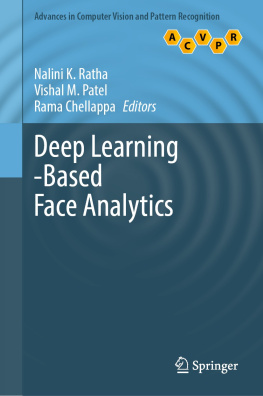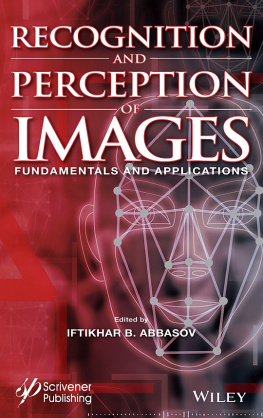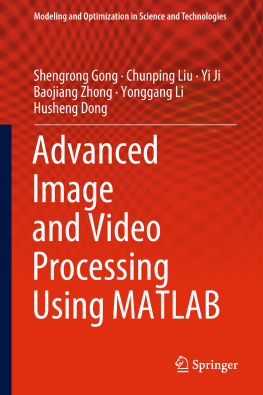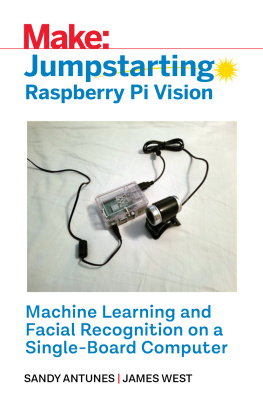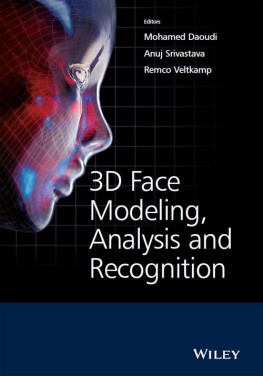Dedicated to
Late Mr. Deorao M.Urkude
In loving memory of my father(The fountain of inspiration)
ACKNOWLEDGEMENT
We are thankful to Dr. K. R. Dixit, (Principal, RCERT, Chandrapur) and
Hon. Shri. Shantaramji Potdukhe, (Ex Minister of Finance) they allow us to do
the research work.
We are equally grateful to all RCERT, Professors for the constant
encouragement and support they have been extending all those days. We never
forgot their friendly behaviour during research work.
Special thanks to family members who support during course of work.
We would also like to thanks everyone who helps us to complete this research
book.
.
Manisha Deorao Urkude
Dr. S. B. Kishor
Dr. S.G. Naranje
[i]
ABSTRACT
Abstract of the entire research, gives clear idea of the research work before studying the depth of the research. Face recognition become very interesting topic of research becauseof lot of unsolved parameters. From past few decades number of researchers work on thetopic to solve the problem of face recognition but still successful face recognition system isnot yet implemented hence we proposed face recognition algorithm that match face matrix.Asdiscuss face isnothing but amatrix so using MATLAB softwarewe do matrixmanipulation and try to find best possible features for face recognition. In law enforcementand lot of commercial applications, such as in the area of access control systems, nationalidentity, video surveillance, user authentication and retrieval of identity from a data base forcriminal investigations face recognition play very important roll but due to challenging problem in real time applications it is not so user friendly.
We take look on many unsolved parameters, such as face illumination, expression,pose, scale, low resolution, partial face (occlusion) and other environmental conditions, nightvideo footage and day video footage. However, different pose and occlusion remains asmajor challenges in face recognition and these two problems affect the performance of facerecognition in access control, authentication, and surveillance applications. To meet thesechallenges,the present study proposed a face recognition system using the analyticalapproach in which centre of two eye i;e forehead used for feature extraction.
In existing methods of analytical face recognition systems, features like eyes, nose,mouth where used as feature point but in proposed system we used forehead region maximumface recognition rate is 80% using Lab view software. In proposed analytical approach offace recognition, no any work has been done using above mention features but by using different features very little work had done.
In literature study maximum recognition rate ofanalytical, holistic and hybrid approach is below 84 % using different face database. In proposed SKM forehead featurework enhancement in recognition rates to 86% and require less time and also solve two bigchallenges half occlusion and different pose.
Facial recognition system is a most useful computer application or device that canidentify individuals based on their unique facial characteristics. Unlike many other biometricidentification methods (e.g., fingerprints, voiceprint, speech), this can be advantageous in clean environments, for surveillance or tracking, and in automation systems. Because thesystem keeps a reference model of the individual, and captures their image for identification.They may also be more error-prone when identifying individuals, due to the fairly recentdevelopment of the technology.
As we know lot of literature available on websites, books, journal etc, we considerinternational and national paper survey for primary source of data. Various algorithm studiesis done from this information collected analysis will be done using various parameters toachieve the basic objective. Study of most popular appearance based face recognitionprojection methods and detailed descriptions of each module are studied .
Our ID cards, passwords can be lost but face is connected part of our body so he/shecan be verified with the help of their face. Due to resources constraints up till the last yearsface recognition has not successfully implemented but now but due to the development ofnew software and hardware technology it is possible to logging into systems with our face.Recently face recognition is attracting much attention in the society of network multimediainformation access & also for security purpose. We are providing an up-to-date criticalsurvey of image - and video-based face recognition research. There are two things for us towrite this thesis first is to provide an up-to-date review of the existing literature available onnet, and the second is to offer some insights into the studies of machine recognition of facesusing software. We conclude the thesis with proposed KSM algorithm that helps thegovernment and private sector for security purpose.
[ii]
Pages
TABLE OF CONTENTS
Pages
ACKNOLEDGEMENT......................................................................................i
ABSTRACT......................................................................................ii
TABLE OF CONTENT......................................................................................iii
LIST OF FIGURES......................................................................................iv
LIST OF TABLES......................................................................................v
ABBREVIATIONS......................................................................................vi
CHAPTER 11.1
INTRODUCTION1-30 Aim of The Thesis 41.2 Objectives of The Thesis 41.3 Motivation 51.4 Grand Challenges of Face Recognition 101.5Formulation of The Problem191.6 Block Diagram of Propose Face Recognition 20 Technique 1.7 Proposed Algorithm 201.8Experimental Setup211.9 Overview of Face Recognition System 221.10 Applications of Face Recognition 23
CHAPTER 2 LITERATURE REVIEW 31-632.1 Three Different Approaches For Face Recognition 322.1.1Holistic approaches322.1.2Analytic approaches352.1.3Hybrid Approach352.2 Method For Face Recognition 37 2.2.1Appearance Based Face Recognition 38 2.2.2Model based face recognition 462.3 Currently Available Face Recognition Websites And 54 Database Websites.
2.3.1Face Recognition Websites 54 2.3.2Database from Websites 55
CHAPTER 3RESEARCH METHODOLOGY 64-102
3.1 Planning 67 3.1.1System Analysis 68 3.1.2Requirement Analysis 68 3.1.3Risk Analysis 693.2 Organizing 693.3 Comparisons 71 3.3.1Comparison ofdifferentalgorithmforface 74 recognition.
3.3.2Different face data base for face recognition 963.4 System Design 97 3.4.1Flow chart for the proposed face recognition 97 3.4.2Sketch of steps of face recognition process 983.5 Implementation of Propose Algorithm in MATLAB 99 3.5.1FRT System Parameters 99
CHAPTER 4FACE RECOGNITION TECHNIQUES 103-136
4.14.2 Feature Extraction Process 1074.3 Face Feature Registration Process 1084.4 Face Database Creation Technique 1094.5 Face Image Verification 1224.64.7 Modular Programme Coding and Results 123 GUI Programme Coding and Results 127
CHAPTER 5 INFORMATION TECHNOLOGY 137-145
TERMINOLOGIES 5.1 Computer Terminology 1385.2 Image Extensions 143
CHAPTER 6 CASE STUDIES 146-1526.1 Conclusion of Case Study 147 Case Survey 150
CHAPTER 7 LIMITATIONS AND SCOPE OF THE 155-157 RESEARCH
7.1
CONCLUSION 158-1648.1 Chapter Wise Conclusion Of Research Work 163 Future work 167
REFERENCES AND BIBLIOGRAPHY..169-175
WEBLIOGRAPHY176-179
APPENDIX180-207
[iii]
LIST OF FIGURES
Fig. No.DescriptionPage No.Fig.1.3.1Finger Imaging 5



